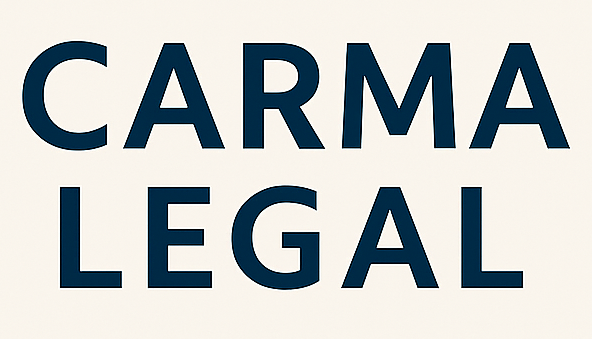understand spinal cord injuries
When you or a loved one experiences a catastrophic spinal injury, the road ahead can feel overwhelming. Severe spinal cord trauma often arises from accidents that involve blunt force or hyperextension of the spine, such as car crashes, major falls, sports mishaps, or construction incidents. In these situations, vertebrae fractures or dislocations can sever or pinch the spinal cord, leading to partial or complete paralysis.
common causes and mechanisms
- Motor vehicle collisions: These account for a significant portion of spinal cord injuries in adults under 65, especially in rollover incidents and motorcycle crashes where riders lack adequate protection [1].
- Slip and fall accidents: Falls are the most frequent cause among older adults, often resulting in compression fractures or cord damage that requires complex litigation to establish premises liability [1].
- Acts of violence: Gunshots and knife wounds account for roughly 12 percent of spinal cord injuries, creating civil and criminal legal avenues for victims [1].
- Medical and surgical errors: Iatrogenic injuries during procedures can leave you with life-altering deficits, requiring proof of negligence to secure fair compensation.
long term impact on life
A severe spinal injury can lead to:
- Partial or full paralysis (paraplegia or quadriplegia)
- Chronic pain and loss of sensation
- Need for full-time professional care and home modifications
- Vocational retraining or permanent disability
Many survivors face medical expenses exceeding $1 million in the first year alone, with ongoing costs of about $185,000 annually thereafter [2]. As a result, you need more than just sympathy—you need a seasoned advocate who understands the true scope of your losses.
appreciate legal complexities
Navigating a spinal injury claim involves layers of complexity that can overwhelm even the most determined claimant. Recognizing these challenges helps you see why enlisting help from a severe spinal injury attorney is critical.
medical evidence hurdles
Spinal injury cases hinge on detailed medical documentation. You must assemble imaging reports, rehabilitation records, and expert assessments to substantiate the extent of your harm. A skilled lawyer collaborates with neurologists, physiatrists, and occupational therapists to translate medical jargon into compelling evidence.
insurer negotiation tactics
Insurance carriers often dispute spinal injury claims, minimizing the severity or attributing preexisting conditions to shift blame. They may push for early, lowball settlements before you fully understand your long-term needs. Your attorney counters these tactics with firm negotiation strategies and a clear presentation of your future medical and living-aid costs.
timeline and limitations
Statutes of limitations vary by state—missing your deadline can forfeit your right to recover damages. In California, for example, you generally have two years from the date of injury to file a lawsuit. A delay also risks the loss of crucial evidence, faded memories, and unavailable witnesses. Prompt legal action preserves both your rights and the integrity of your case.
enlist skilled legal advocacy
You deserve representation with the depth of experience to handle catastrophic spinal injury claims. An attorney with a focus on spinal cord trauma brings specialized skills that a general personal injury lawyer may not possess.
specialized knowledge and expertise
A law firm dedicated to spinal injury cases understands the nuances of neuroanatomy, rehabilitation protocols, and life-care planning. They know how to calculate future medical expenses, lost earning capacity, home modification needs, and attendant care costs. This expertise ensures you cast a wide net when seeking compensation.
engaging medical specialists
Your attorney will tap into a network of medical experts, from neurosurgeons to vocational rehabilitation counselors. By consulting these professionals, your legal team builds a robust narrative of your current condition and foreseeable needs. Expert testimony becomes a cornerstone of your claim, lending credibility that insurers and juries respect.
leverage case building strategies
A successful spinal injury lawsuit is more than filing paperwork. It requires a strategic approach to evidence gathering, liability demonstration, and damage quantification.
gathering critical evidence
- Scene investigation photographs
- Accident reports and witness statements
- Surveillance or traffic camera footage
- Medical records from initial treatment through rehabilitation
By securing these elements early, your lawyer can reconstruct the event, identify liable parties, and pinpoint negligence.
using expert testimony
Expert witnesses play a pivotal role. They provide impartial assessments of:
- The cause and mechanism of injury
- Rehabilitation prognosis and life-care needs
- Economic projections for lost wages and future earnings
Courts give significant weight to expert opinions when determining fault and award amounts.
documenting non-economic losses
Beyond medical bills and salary losses, you can claim compensation for:
- Physical pain and emotional suffering
- Loss of consortium and enjoyment of life
- Psychological impacts such as depression or anxiety
A thorough case strategy ensures these intangible damages are not overlooked.
seek maximum compensation
Understanding the types of recoverable damages empowers you to pursue everything you deserve.
economic damages overview
Economic (or “special”) damages cover tangible financial losses:
| Category | Examples |
|---|---|
| Medical expenses | Hospital stays, surgeries, therapy |
| Lost income | Wages lost during recovery, future earnings |
| Home modifications | Wheelchair ramps, accessible bathrooms |
| Assistive devices | Power wheelchairs, adaptive equipment |
Securing an attorney adept at calculating future costs prevents shortchanged settlements.
non-economic and punitive damages
Non-economic (“general”) damages account for pain, suffering, and emotional distress. In rare cases of egregious negligence, punitive damages punish wrongdoers and deter similar conduct. A catastrophic injury advocate knows how to frame your story to justify these awards.
select the right attorney
Not all lawyers are equally equipped for spinal injury litigation. Here’s how to narrow your options.
evaluating track record
Look for a history of successful verdicts and settlements in catastrophic injury cases. Firms that frequently handle complex spinal claims demonstrate familiarity with defense tactics and courtroom dynamics.
assessing community ties
Attorneys who collaborate with hospitals, rehabilitation centers, and patient advocacy groups often deliver stronger cases. Their connections provide access to up-to-date research and specialized resources.
communication and trust
You need clear, ongoing updates and a lawyer who listens to your concerns. During your initial consultation, gauge whether they explain strategies in plain language and respond promptly to questions.
For related catastrophic injuries, you might explore resources on traumatic brain injury attorney, serious injury lawyer, or life changing injury attorney.
act without delay
Time is not on your side after a severe spinal accident. Immediate steps can safeguard your claim.
preserving evidence
- Photograph injuries and accident site
- Obtain witness contact information
- Secure medical evaluations promptly
Your lawyer can issue preservation letters to prevent destruction of critical evidence.
filing within deadlines
Missing the statute of limitations often ends your case before it begins. An experienced catastrophic injury lawyer ensures all paperwork meets court requirements and deadlines.
move toward recovery
While your attorney focuses on legal strategy, you can devote energy to healing and adjusting to new realities.
focusing on healing
Adhere to treatment plans, attend therapy sessions, and maintain medical records. Clear documentation of progress bolsters your claim and demonstrates your commitment to rehabilitation.
relying on professional guidance
Lean on support networks—family, counselors, and patient groups—to manage emotional stress. Your legal team coordinates with caregivers and experts to align your medical and legal objectives.
take the next step
When a life-altering spinal injury disrupts your world, a specialized advocate can secure the resources you need for treatment, support, and justice. Don’t navigate this complex terrain alone. Contact a dedicated severe spinal injury attorney today to discuss your rights, explore your options, and take the first step toward full compensation and recovery.








